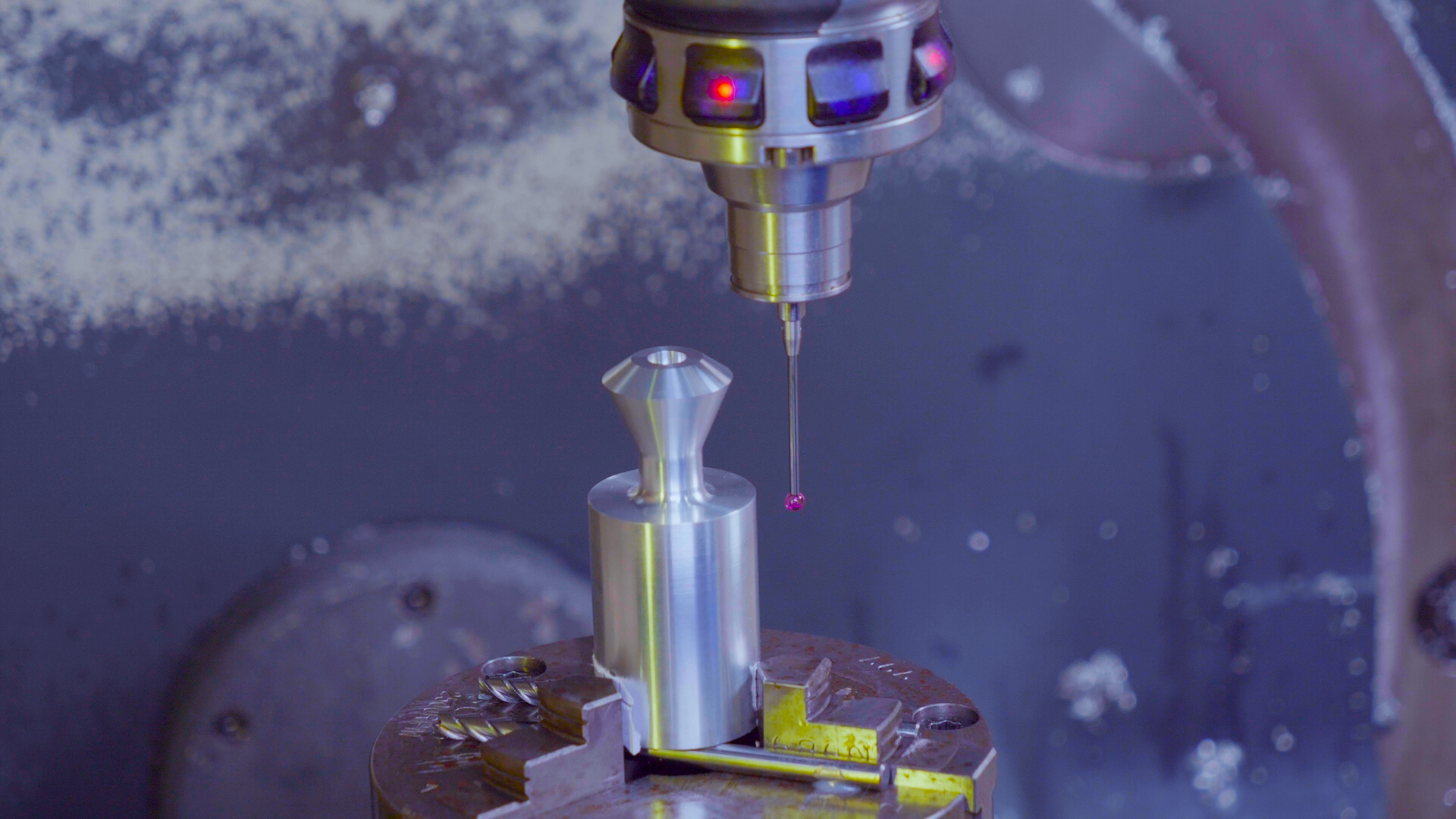A 5-axis CNC machine moves cutting tools or parts along five axes at the same time. Multi-axis CNC machines can manufacture parts with complex geometries, as they offer two additional rotational axes. These machines eliminate the need for multiple machine setups.
What are the advantages and limitations of 5-axis CNC machining?
Five-axis CNC machining allows the tool to remain constantly tangential to the cutting surface. The tool paths can be more intricate and efficient, resulting in parts with better surface finish and lower machining times.
That said, 5-axis CNC has its limitations. Basic tool geometry and tool access limitations still apply (for example, parts with internal geometries cannot be machined). Moreover, the cost of using such systems is higher.
CNC machining undercuts
Undercuts are features that cannot be machined using standard cutting tools, as some of their surfaces are not accessible directly from above.
There are two main types of undercuts: T-slots and dovetails. Undercuts can be one-sided or double-sided and are machined using special tools.
T-slot cutting tools are made of a horizontal cutting blade attached to a vertical shaft. The width of an undercut can vary between 3mm and 40mm. We recommend using standard sizes for the width (i.e. whole millimeter increments or standard inch fractions), as it is more likely that an appropriate tool is already available.
For dovetail cutting tools, the angle is the defining feature size. Both 45o and 60o dovetail tools are considered standard. Tools with an angle of 5o, 10o and up to 120o (at 10o increments) also exist, but are less commonly used.
Post time: Jun-17-2022


